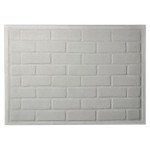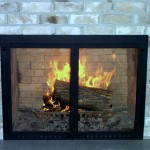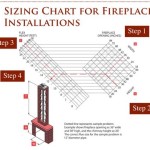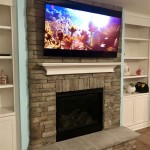Fireplace Wood Types: A Comprehensive Guide
Selecting the appropriate type of wood for a fireplace is crucial for efficient heating, safety, and minimizing environmental impact. The burning characteristics of wood vary significantly depending on the species, density, moisture content, and preparation. Choosing the right wood ensures a clean burn with optimal heat output, reducing creosote buildup and the risk of chimney fires. This guide provides a detailed overview of common fireplace wood types and their associated characteristics.
The primary distinction between firewood is between hardwoods and softwoods. Hardwoods generally come from deciduous trees that lose their leaves annually, while softwoods come from coniferous trees, which typically have needles and remain evergreen. While "hardwood" and "softwood" provide a general guideline, the terms relate more to the tree's botanical structure than the actual hardness of the wood itself. Some softwoods can be denser than some hardwoods, requiring careful consideration beyond the simple classification.
Hardwood Firewood: Density, Heat Output, and Burn Time
Hardwoods are typically preferred for fireplace use due to their higher density, resulting in greater heat output and longer burn times. Denser wood contains more energy per volume, providing more heat per log. Hardwoods also tend to produce less smoke and creosote compared to softwoods when properly seasoned.
Oak is a widely recognized and highly valued hardwood for firewood. It is known for its exceptional density, slow burn rate, and high heat output. Oak requires a longer seasoning time, typically 12-24 months, to reduce its moisture content to an acceptable level. Unseasoned oak can be difficult to ignite and produces excessive smoke. Different varieties of oak, such as red oak and white oak, exist, each with slight variations in density and burning characteristics. White oak is generally denser and more resistant to rot than red oak.
Maple is another popular hardwood, offering a good balance of heat output and burn time. It is easier to split and seasons faster than oak, typically requiring 6-12 months. Maple produces a pleasant aroma and is relatively clean-burning. Different varieties of maple, including sugar maple, red maple, and silver maple, vary slightly in density and heat output. Sugar maple is generally considered the densest and provides the highest heat output.
Ash is a hardwood characterized by its easy splitting, relatively fast seasoning time (6-12 months), and good heat output. It burns cleanly and produces minimal smoke. Ash is often preferred by those seeking a readily available and easy-to-manage firewood source. Like other hardwoods, different varieties of ash exist, each with varying characteristics.
Birch is a hardwood known for its attractive bark and pleasant aroma when burned. It is relatively easy to ignite and produces good heat, but it burns faster than denser hardwoods like oak and maple. Birch requires a shorter seasoning time compared to oak, typically 6-12 months. The paper birch variety is known for its easily ignitable bark, which can be used as a natural fire starter.
Cherry is a hardwood that offers a unique and pleasant aroma when burned. It provides moderate heat output and burns cleanly. Cherry seasons relatively quickly, usually within 6-12 months. However, it is not as dense as oak or maple and will burn faster. The distinctive scent makes it a favored choice for some fireplace users.
Softwood Firewood: Ignition, Burn Rate, and Considerations
Softwoods are generally less dense than hardwoods and burn more quickly, producing less heat per volume. They are typically easier to ignite due to their higher resin content. However, softwoods also tend to produce more smoke and creosote, making them less desirable for primary heating purposes.
Pine is a common softwood that ignites easily and burns quickly, making it suitable for starting fires. However, it produces a significant amount of smoke and creosote due to its high resin content. Pine is not recommended for sustained burning in a fireplace, as it can contribute to chimney buildup and increase the risk of chimney fires. It is best used for kindling or brief periods of burning.
Fir is another softwood that shares similar characteristics with pine. It ignites easily, burns quickly, and produces a moderate amount of heat. However, like pine, it also produces more smoke and creosote than hardwoods. Fir is often used for starting fires or for supplemental heating, but it is not ideal for prolonged burning.
Spruce is a softwood known for its straight grain and ease of splitting. It ignites readily and burns quickly, providing moderate heat output. However, spruce produces a considerable amount of smoke and creosote, making it less suitable for fireplace use than hardwoods. Its primary application lies in kindling or short-duration fires.
Cedar is a softwood valued for its aromatic properties and resistance to decay. It ignites relatively easily and burns with a pleasant scent. Cedar is often used for flavoring food on a grill but is less common as a primary firewood source due to its lower heat output and relatively fast burn rate. It is also important to note that some individuals may be sensitive to cedar smoke.
Larch, also known as Tamarack, is a unique softwood that loses its needles in the fall, behaving somewhat like a deciduous tree. It is denser than many other softwoods and provides a relatively high heat output. Larch still produces more smoke and creosote than hardwoods, but it can be a viable option in regions where hardwoods are scarce. Careful seasoning is essential to minimize smoke production.
Seasoning Firewood: Moisture Content and Optimal Burning
Regardless of the type of wood chosen, proper seasoning is paramount for efficient and safe burning. Seasoning refers to the process of drying wood to reduce its moisture content. Freshly cut wood can contain as much as 50% moisture, while properly seasoned wood should have a moisture content of 20% or less.
Burning unseasoned wood results in several negative consequences. It is difficult to ignite, produces excessive smoke, and generates significantly less heat. The water in the wood absorbs a considerable amount of energy during combustion, reducing the overall efficiency of the fire. Moreover, burning wet wood significantly increases creosote buildup in the chimney, raising the risk of chimney fires.
The seasoning process typically involves splitting the wood, stacking it loosely in a well-ventilated area, and allowing it to dry for a period of months or years, depending on the wood species and climate. Splitting the wood increases the surface area exposed to air, accelerating the drying process. Proper stacking allows for air circulation, which helps to remove moisture from the wood. The ideal location for seasoning firewood is a sunny, windy area with good drainage.
A moisture meter can be used to accurately determine the moisture content of firewood. This device measures the electrical resistance of the wood, which is inversely proportional to its moisture content. When using a moisture meter, it is important to split a piece of wood and measure the moisture content on a freshly exposed surface. This provides a more accurate reading than measuring the surface moisture content.
Signs of properly seasoned firewood include cracks in the end grain, a lighter weight compared to unseasoned wood, and a dull, gray color. When struck together, seasoned wood will produce a hollow sound, while unseasoned wood will produce a dull thud.
Beyond these factors, the source of the wood is important. Sustainable forestry practices ensure that wood is harvested responsibly, minimizing environmental impact. Purchasing firewood from reputable dealers who adhere to sustainable practices helps to preserve forest ecosystems. It's often preferable to buy local wood to reduce transportation costs and support local economies.
Ultimately, understanding the characteristics of different fireplace wood types and the importance of proper seasoning allows for making informed decisions that maximize heating efficiency, minimize environmental impact, and ensure the safety of the home.

Types Of Wood Burning Fireplaces Regency

Types Of Fireplaces For Your Home Which One Is Best Panadero

Types Of Wood Burning Fireplaces Regency

Chimney Pro Everything You Need To Know About Wood Fireplaces

What Are The Types Of Fireplace Inserts Dc Service

What Are The Diffe Types Of Wooden Fireplace Surround Direct Fireplaces

Choosing Proper Wood For Fireplace

Types Of Fireplaces For Your Home Which One Is Best Panadero

Types And Differences Of Wood Fireplaces Chazelles

Types Of Wood Burning Fireplaces Regency








